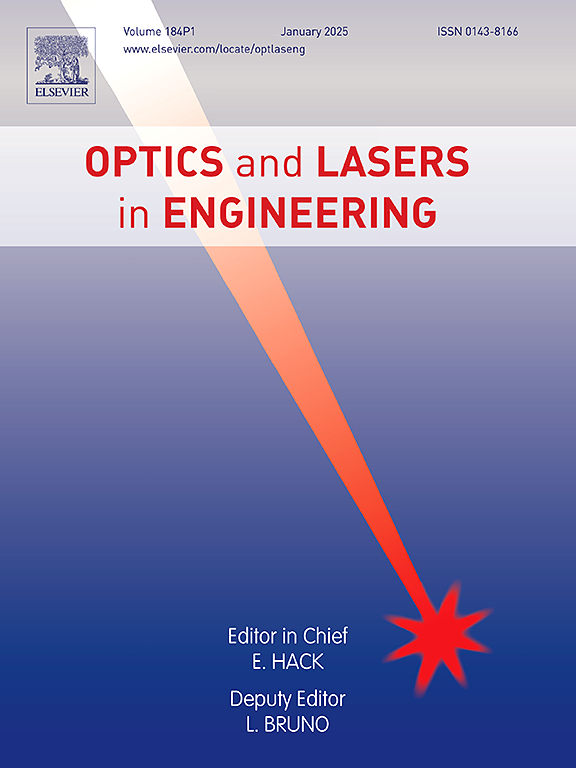A light plane calibration method of line-structured light sensors based on unified extrinsic parameters estimation
IF 3.5
2区 工程技术
Q2 OPTICS
引用次数: 0
Abstract
Light plane calibration is crucial for line-structured light systems. However, traditional methods struggle with achieving micrometer-level accuracy and handling a small depth of field. In these conditions, blurred target features increase pixel coordinate noise and reduce the accuracy of sensor model parameter calibration. Therefore, this paper proposes a light plane calibration method based on unified extrinsic parameter estimation using a planar target. This method utilizes a two-dimensional target and a translation stage to extend the two-dimensional feature points into three-dimensional feature points. The aim is to improve the calibration accuracy of sensor model parameters under small depth of field conditions and reduce the system errors introduced by the sensor. The experimental results support the conclusion that the proposed method significantly improves the calibration accuracy of line structured light under shallow depth-of-field conditions.
基于统一外在参数估计的线结构光传感器光平面校准方法
本文章由计算机程序翻译,如有差异,请以英文原文为准。
求助全文
约1分钟内获得全文
求助全文
来源期刊

Optics and Lasers in Engineering
工程技术-光学
CiteScore
8.90
自引率
8.70%
发文量
384
审稿时长
42 days
期刊介绍:
Optics and Lasers in Engineering aims at providing an international forum for the interchange of information on the development of optical techniques and laser technology in engineering. Emphasis is placed on contributions targeted at the practical use of methods and devices, the development and enhancement of solutions and new theoretical concepts for experimental methods.
Optics and Lasers in Engineering reflects the main areas in which optical methods are being used and developed for an engineering environment. Manuscripts should offer clear evidence of novelty and significance. Papers focusing on parameter optimization or computational issues are not suitable. Similarly, papers focussed on an application rather than the optical method fall outside the journal''s scope. The scope of the journal is defined to include the following:
-Optical Metrology-
Optical Methods for 3D visualization and virtual engineering-
Optical Techniques for Microsystems-
Imaging, Microscopy and Adaptive Optics-
Computational Imaging-
Laser methods in manufacturing-
Integrated optical and photonic sensors-
Optics and Photonics in Life Science-
Hyperspectral and spectroscopic methods-
Infrared and Terahertz techniques
 求助内容:
求助内容: 应助结果提醒方式:
应助结果提醒方式:


